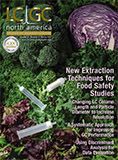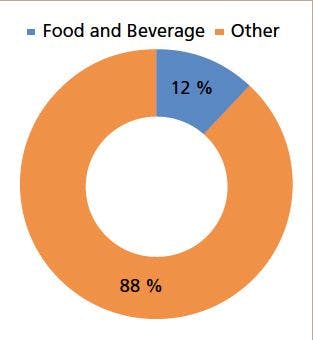Market Profile: Food Testing with GC–MS
Gas chromatography–mass spectrometry (GC–MS) is a widely used technique for food safety and quality assurance applications.
Gas chromatography–mass spectrometry (GC–MS) is a widely used technique for food safety and quality assurance applications. Its robust separation power allows it to analyze foods for specific compounds like BPA and acrylamide, or more complex mixtures such as pollutants and pesticide residues, among other toxic compounds. In particular, single-quadrupole instruments have been the workhorse of the industry, however, the use of high-end mass spectrometers has become more prevalent as researchers are demanding lower limits of detection, employing triple-quadrupole, time-of-flight (TOF), quadrupole time-of-flight (QTOF), and orbital trap instruments.

As with liquid chromatography applications, GC–triple quadrupole MS instruments are used for quantitation. The other high-end instruments can provide quantitative analysis, but they cannot deliver the same power as GC–triple quadrupole MS instruments. GC–TOF, GC–QTOF, and GC–orbital trap systems are highly sensitive instruments, delivering high peak capacity. Due to their repeatability, researchers can reference libraries instead of relying on internal standards. As a result, these high-end instruments have become the staple for compound identification and metabolite analyses.
For determining the origin of food adulterants, labs typically rely on GC–magnetic sector instruments, which can determine the relative abundance of isotopes, measuring 13C content in the sample. Food testing has been a rapidly growing segment of the GC and GC–MS market, representing about 12% of the overall GC and GC–MS market in 2016. While the long-term forecast remains strong, it will not be without its own set of challenges. More recently, decreased staffing and President Trump’s federal hiring freeze has caused delays in laboratory testing at the Food Safety Inspection Service (FSIS). The total market for GC and GC–MS accounted for approximately $2.5 billion in 2016. Environmental and food applications are expected to drive the market with a projected growth of 5% over the next five years. Market size and growth estimates were adopted from TDA’s Industry Data, a database of market profiles from independent market research firm, Top-Down Analytics. For more information, contact Glenn Cudiamat, General Manager at (888) 953-5655 or
glenn.cudiamat@tdaresearch.com
. Glenn is a market research expert and has been covering the analytical instrumentation industry for nearly two decades.

Analytical Challenges in Measuring Migration from Food Contact Materials
November 2nd 2015Food contact materials contain low molecular weight additives and processing aids which can migrate into foods leading to trace levels of contamination. Food safety is ensured through regulations, comprising compositional controls and migration limits, which present a significant analytical challenge to the food industry to ensure compliance and demonstrate due diligence. Of the various analytical approaches, LC-MS/MS has proved to be an essential tool in monitoring migration of target compounds into foods, and more sophisticated approaches such as LC-high resolution MS (Orbitrap) are being increasingly used for untargeted analysis to monitor non-intentionally added substances. This podcast will provide an overview to this area, illustrated with various applications showing current approaches being employed.











